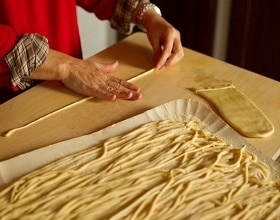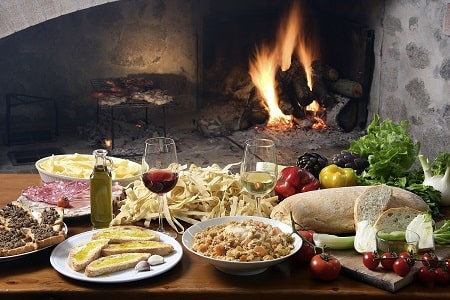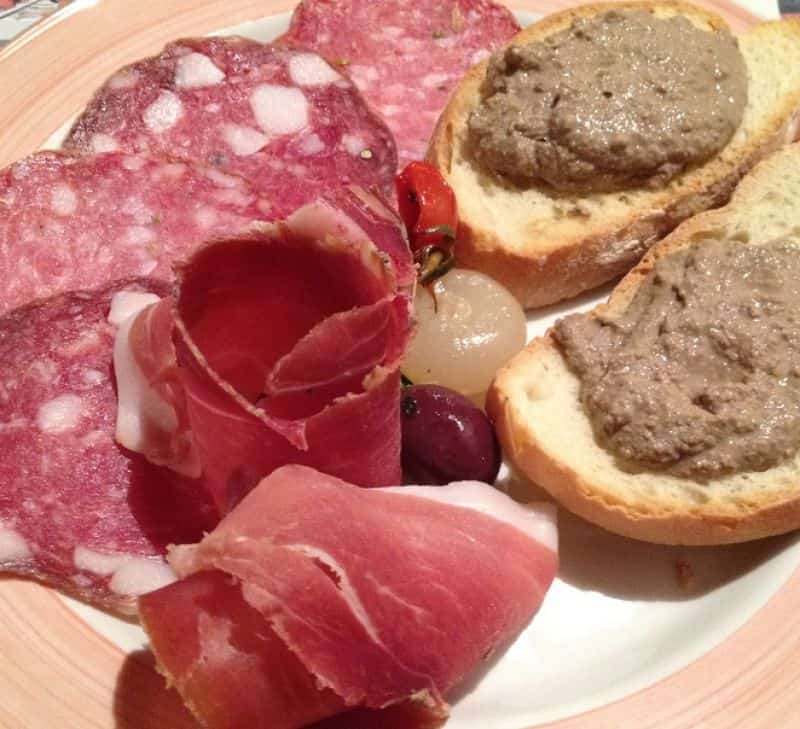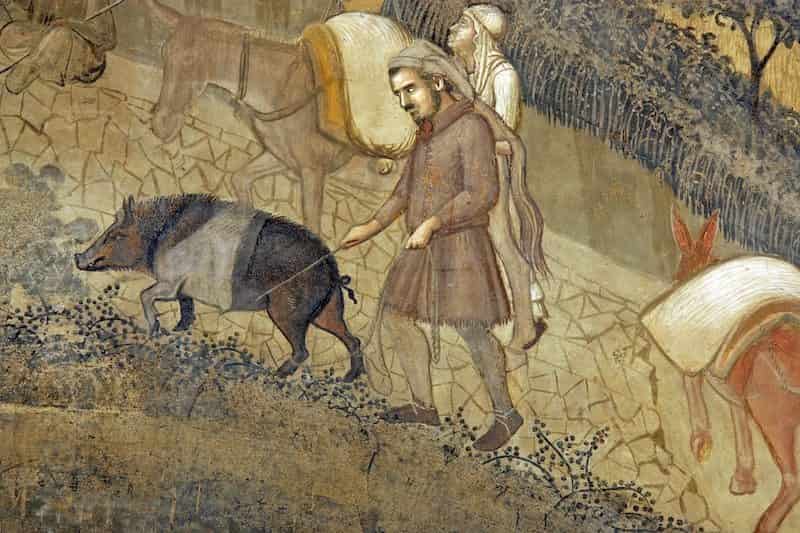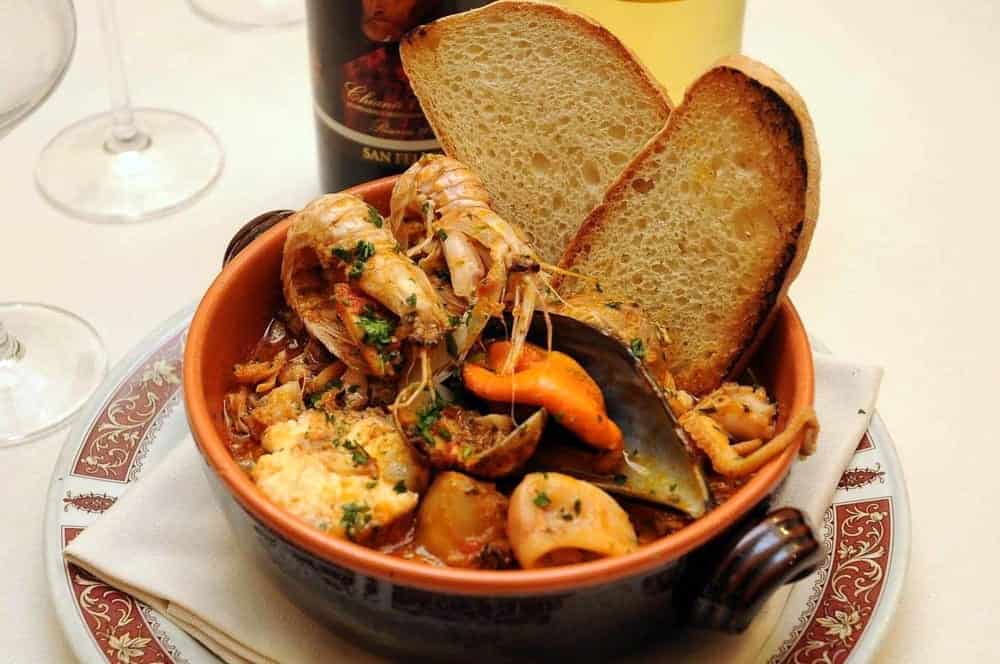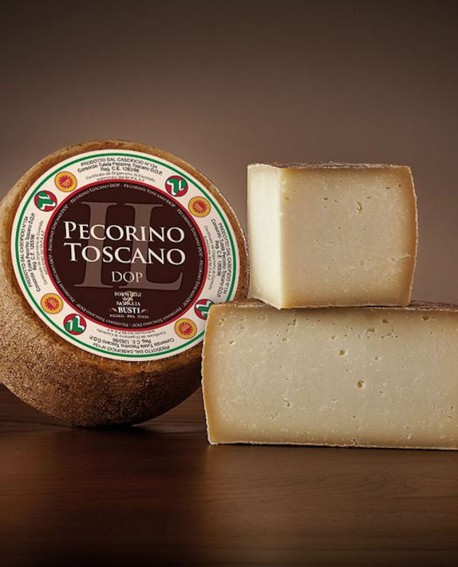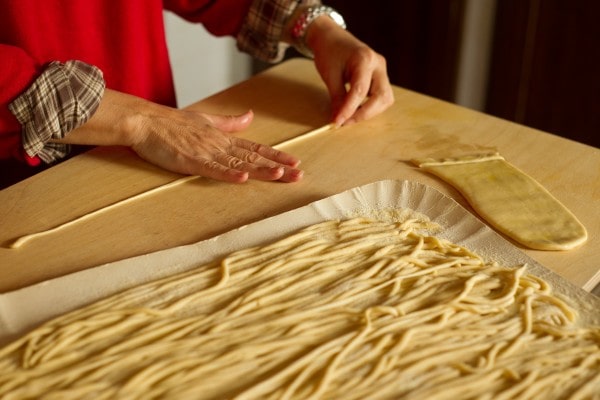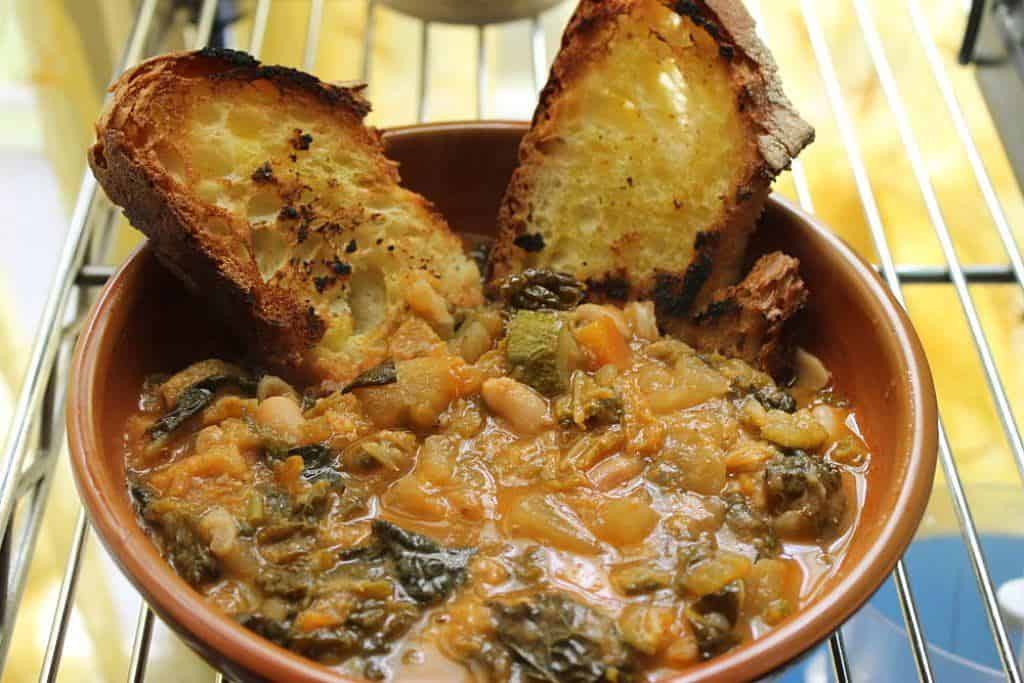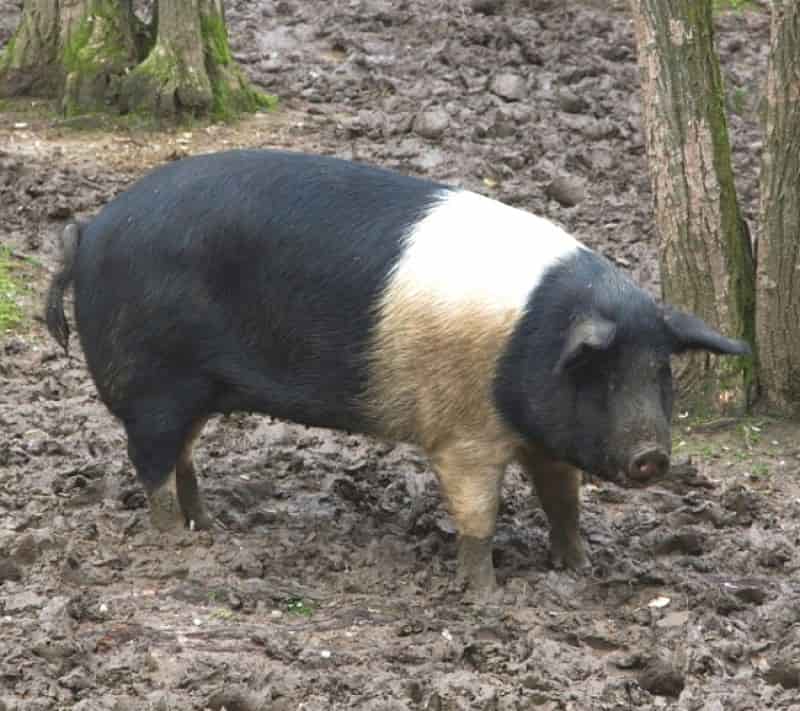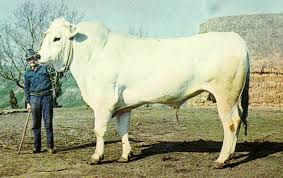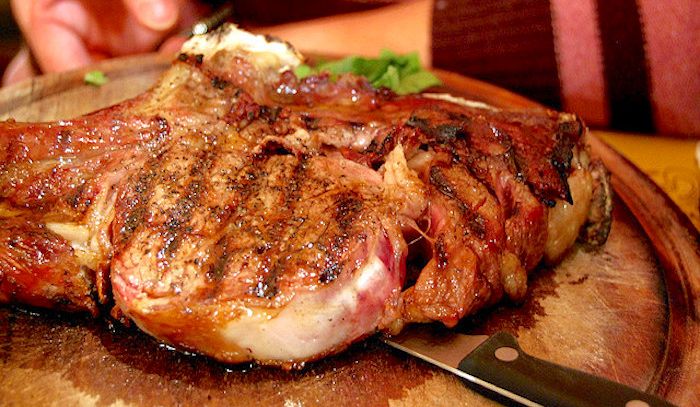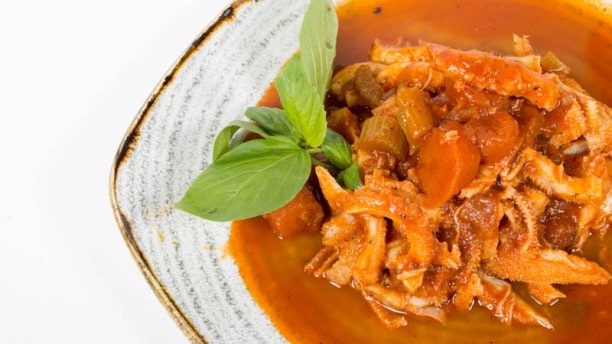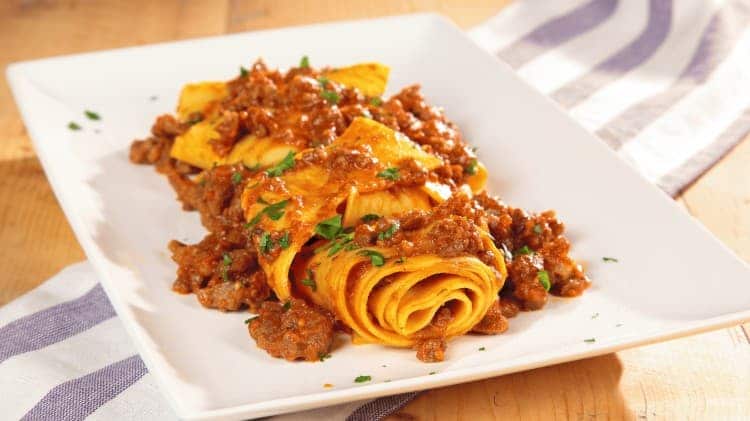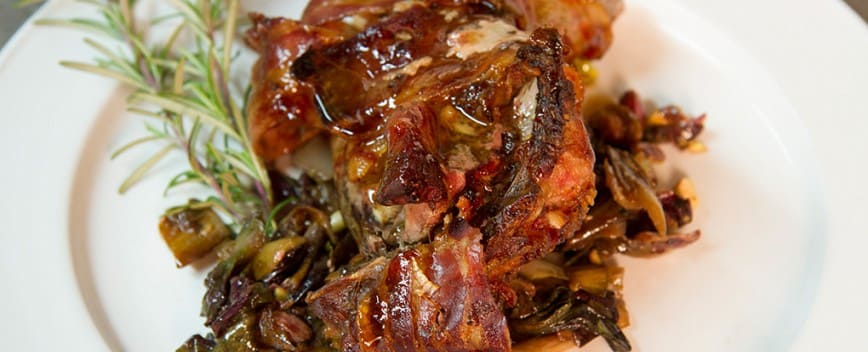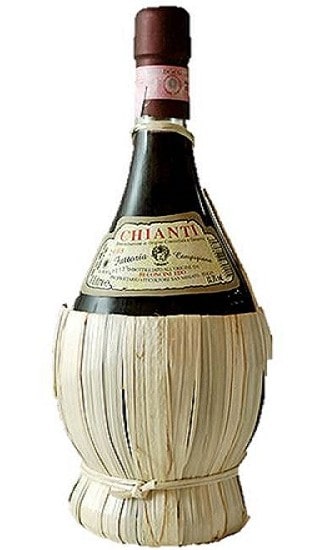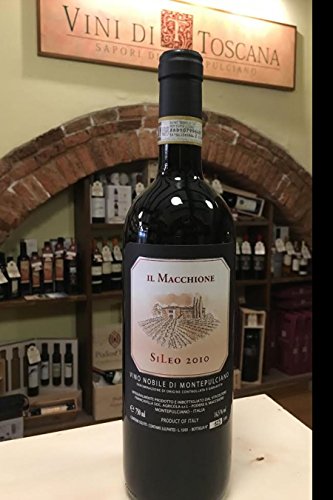Tuscan cuisine
The Tuscan cuisine consists mainly of traditional dishes and sweets that have kept their preparation unchanged for many years.
Bread without salt is a custom that few other regions have adopted (like Umbria). It seems that the custom dates back to the twelfth century when, at the height of the rivalry between Pisa and Florence, the Pisans put in practice high prices to the precious sodium chloride. There is also a hypothesis that says that the same lords of Florence were to impose particularly high taxes on the use of salt.
In Tuscany, the sacredness of bread, or the importance of not throwing it away but of using it even when it is stale, is evidenced by a long series of ancient recipes that are still widespread: Panzanella, Panata, Ribollita, Acquacotta, the Pappa al Pomodoro, the Fettunta, the vegetable soup, the Farinata, the Cabbage soup or the Pan co ‘santi.
Another characteristic of Tuscan cooking is the use of white meats and game. The products of the farm hive, where free-range chickens, turkeys, geese, guinea fowl and pigeons graze together with rabbits and game like hare and wild boar, pheasant and porcupine have always been the menu of big parties during the Middle Ages . The pork is also very used, just think of the famous Tuscan salami, finocchiona, ham preserved in salt, lardo di Colonnata sausages and special products such as the buristo also the result of the ingenuity of the poor people.
Among the cheeses, the tradition focuses on Tuscan Pecorino, as a product to be conserved: the most famous ones are Pienza and Maremma; while we find Ricotta and Raveggiolo among soft cheeses.
Finally, great space for desserts, where the Panforte, the Ricciarelli, the Cavallucci, the soup of the Duke, the cake of Cecco, the Migliacci, the Cantuccini of Prato.
Tuscan cuisine
Tuscan cuisine during the time
The Tuscan cuisine is characterized by the evident lack of homogeneity and by the radical divergence of recipes and culinary traditions, especially with respect to the territory of belonging and family tradition, so that some families paradoxically know more non-Tuscan dishes, which dishes of different provinces: in the center -sud of Tuscany, for example, few know the “Farinata di cavolo nero” typical of the north-east and of the coast, where it is called “Bordatino”; at the same time, although many Florentines traditionally go on holiday in the areas of Viareggio and the island of Elba, they often ignore the existence of dishes such as Cacciucco at Viareggina or Gurguglione
Tuscan cuisine presents a radical dichotomy between traditional folk dishes and dishes of courtly creation: while the former have remained, though varying over time, the latter, those of the courtly tradition, have mostly disappeared or find very weak space in the current Toscany cuisine ; between these two traditions, only in the last centuries has the cuisine of the middle class found space, which is distinguished by the use of poultry meat or game.
Direct consequences of this are the undisputed “Tuscanity” attributed to poor dishes (often consisting of only vegetables) from Tuscany (such as Ribollita) or even central Italy (such as Panzanella), as well as the systematic use of wet old bread as a surrogate for meat; the disappearance of noble dishes such as Cibreo or Ginestrata (a sort of egg yolk soup mixed with sugar, whipped egg whites, dried Vin Santo, cinnamon, nutmeg and chicken broth, considered tonic, aphrodisiac and constituent) and the spreading out of the local area of origin of dishes such as Paté di Fegatini (an invention by Caterina de Medici);
finally, the increasingly important employment in rural or rural areas of white meat, typical of a well-to-do middle class, without a specific baggage of recipes, present in other regions (Ligurian rabbit, Abbacchio, Pajata …) opposed to the systematic and isolated employment meat in the city areas, where the middle class had long been developed (examples are the Florentine tripe or Lampredotto sold almost exclusively in Florence street)
Tuscan cuisine
Tuscan cuisine on the Tuscany provinces
As already mentioned, the Tuscan cuisine differs considerably from the coast to the inland; in fact, dishes such as Caldaro or Cacciucco are only sporadically cooked in the inland; while the game is used in the rural areas of the province of Siena, the upper Val d’Arno , nell’Aretino, and secondly in Garfagnana and Lunigiana; the exceptional growth of the wild boar population has allowed all of its preparations to be used almost everywhere.
Freshwater fish are in the same paradoxical situation as poultry: present in the last centuries in the tables of the poorest and least developed areas, they do not have their own culinary tradition: the Valdelsa has, for example, an in-depth fishing tradition of river, but not an equally thorough cuisine, and the area of Lake Chiusi is famous for Brustico
Consumed by the poorest of the population, especially Jews, they owe to them the almost omnipresent method of cooking “alla mosaica” (stewed in tomato sauce with garlic, today we tend to call them in the style of Livornese or Pizzaiola with the addition of capers and oregano, not to confuse them with another Hebrew recipe, which includes pine nuts and raisins
an Aretine variant is made up of the Giovese eels (ie dipped in a tomato sauce over a sauté of aromatic herbs, a typical recipe by Giovi)
Meat in Tuscan cuisine
Pork
The families of the middle and lower classes, even if they live in the city, towards the end of November and early December went to farmers, acquaintances or relatives to cross the pig according to tradition. The pig, a gelding from 180 to 220 kilos, is slaughtered to have a supply of food for the whole winter and part of the spring. This is because in Tuscany, as in many other parts of the country, the meats selected and treated with salt, pepper and other spices are kept hanging on a hook in fresh and dry environments.
In this way they are seasoned:
Tuscan ham
Tuscan salami
Salciccia from Serbian
Pancetta, the pancetta spread is also called Alano and Rigatino
Capocollo
Finocchiona
As a costume we try to use the maximum without throwing away anything of the pig, for example, the guts were turned over and cleaned to put sausages, today they are used for sausages films for food as we commonly find on the market
Gastronomic excellence is considered the meat obtained from Cinta Senese pigs. It is a pig breed bred in the wild and semi-wild on most of the territory of the province of Siena, in the southern part of the province of Florence and in the northern part of the province of Grosseto. The breed is recognizable by the characteristic band around the neck that distinguishes the animals, differentiating themselves clearly from the remaining color
Tuscan cuisine
The beef
Chianina and Maremmana cows
The Chianina cow and the Maremmana cow are types of beef obtained from the respective animals that are bred in the wild or semi-wild, respectively in the Val di Chiana, Valtiberina, Casentino and in the Maremma.
Both are considered of excellent quality, although with different characteristics due to the different territories in which they graze, they lend themselves well to the Florentine steak, where however is perceived the greater natural flavor of Maremma meat compared to Chianina: for this reason, while Chianina is favorite for the classic steak, the Maremmana is mostly used in the preparation of stews and braised.
Tripe and Lampredotto
A recipe, Florentine tripe, sees the use of entrails of adult bovine in the preparation of one of the most famous second courses typical of Florence. Tripe is also used in the preparation of other recipes that differ locally.
Equally known is the Lampredotto specialty.
The game
The game is very popular in Tuscan cuisine: almost always present in taverns and traditional restaurants of the inland, it is omnipresent in the Arezzo area and in eastern Grosseto because of the high presence of wild boar. In familiar contexts it is reserved for important occasions, usually procured by relatives hunters; and is used in the preparation of first courses (pappardelle with wild boar, or mixed game ragout)
Or main dishes (wild boar and stewed hare, in the oven or in the pan) and unique dishes (stew, usually “alla cacciatora”: stewed with tomato and chilli). Typical restaurant dishes are steaks of wild boar, and wild boar in sweet (with dark chocolate) in addition to the related meats; pheasant (which is now more bred than hunted) usually roasted; the various ragouts of hare, fallow deer, and roe deer. The pigeon or the dove are more and more rarely consumed, and so is the porcupine.
Tuscan cuisine
Wines of Tuscany
Denomination of Controlled and Guaranteed Origin (DOCG)
Brunello di Montalcino (Red in the normal and Riserva types) produced in the province of Siena
Carmignano (Red in the normal and Riserva types) produced in the province of Prato and Florence.
Chianti (Red in the normal types and reserve produced in the provinces of Arezzo, Florence, Pisa, Pistoia, Prato and Siena, with the possible indication of the sub-zones
Montecucco Sangiovese produced in the province of Grosseto
Morellino di Scansano (Red in the normal and reserve types) produced in the province of Grosseto from the 2007 harvest
Vernaccia di San Gimignano (White in the normal and Riserva types) produced in the province of Siena
Vino Nobile di Montepulciano (Red in the normal and Riserva types) produced in the province of Siena
Verduzzo (typical Tuscan, high quality)
Denomination of Controlled Origin (DOC)
Ansonica Costa dell’Argentario produced in the province of Grosseto
Bianco della Valdinievole produced in the province of Pistoia
Bianco dell’Empolese produced in the provinces of Florence and Pistoia
Barco Reale di Carmignano or Barco Reale produced in the provinces of Florence and Prato
White Pisano di San Torpè produced in the province of Pisa
White Virgin of Valdichiana or Valdichiana produced in the provinces of Arezzo and Siena
Bianco di Pitigliano produced in the province of Grosseto
Bolgheri produced in the province of Livorno
Candia dei Colli Apuani produced in the province of Massa-Carrara
Capalbio produced in the province of Grosseto
Colli dell’Etruria Centrale produced in the provinces of Arezzo, Florence, Pisa, Pistoia, Prato and Siena
Colline Lucchesi produced in the province of Lucca
Cortona produced in the province of Arezzo
Elba produced in the province of Livorno
Montecarlo produced in the province of Lucca
Monteregio di Massa Marittima produced in the province of Grosseto
Montescudaio produced in the provinces of Livorno and Pisa
Morellino di Scansano (Red in the normal and Riserva types) produced in the province of Grosseto up to the 2006 harvest
Moscadello di Montalcino produced in the province of Siena
Orcia produced in the province of Siena
Parrina produced in the province of Grosseto
Pomino produced in the province of Florence
Rosso di Montalcino produced in the province of Siena
Rosso di Montepulciano produced in the province of Siena
San Gimignano (Red in the normal types, Riserva and Novello) produced in the province of Siena
Sant’Antimo produced in the province of Siena
Sovana produced in the province of Grosseto
Terratico Bibbona produced in the northern part of the province of Livorno
Val d’Arbia produced in the province of Siena
Val di Cornia produced in the provinces of Livorno and Pisa
Valdichiana produced in the province of Siena
Vin Santo del Chianti produced in the provinces of Arezzo, Florence, Pisa, Pistoia, Prato and Siena
If you liked this article, put a like on my Facebook page
if you want to learn how to make fresh handmade tagliatelle, with the traditional Bolognese Meat Sauce subscribe to one of my classes.
Short class
one-day class
or the new Online Cooking Classes to live a cooking experience directly at your home
See you soon with a new article.
Chef Luigi

